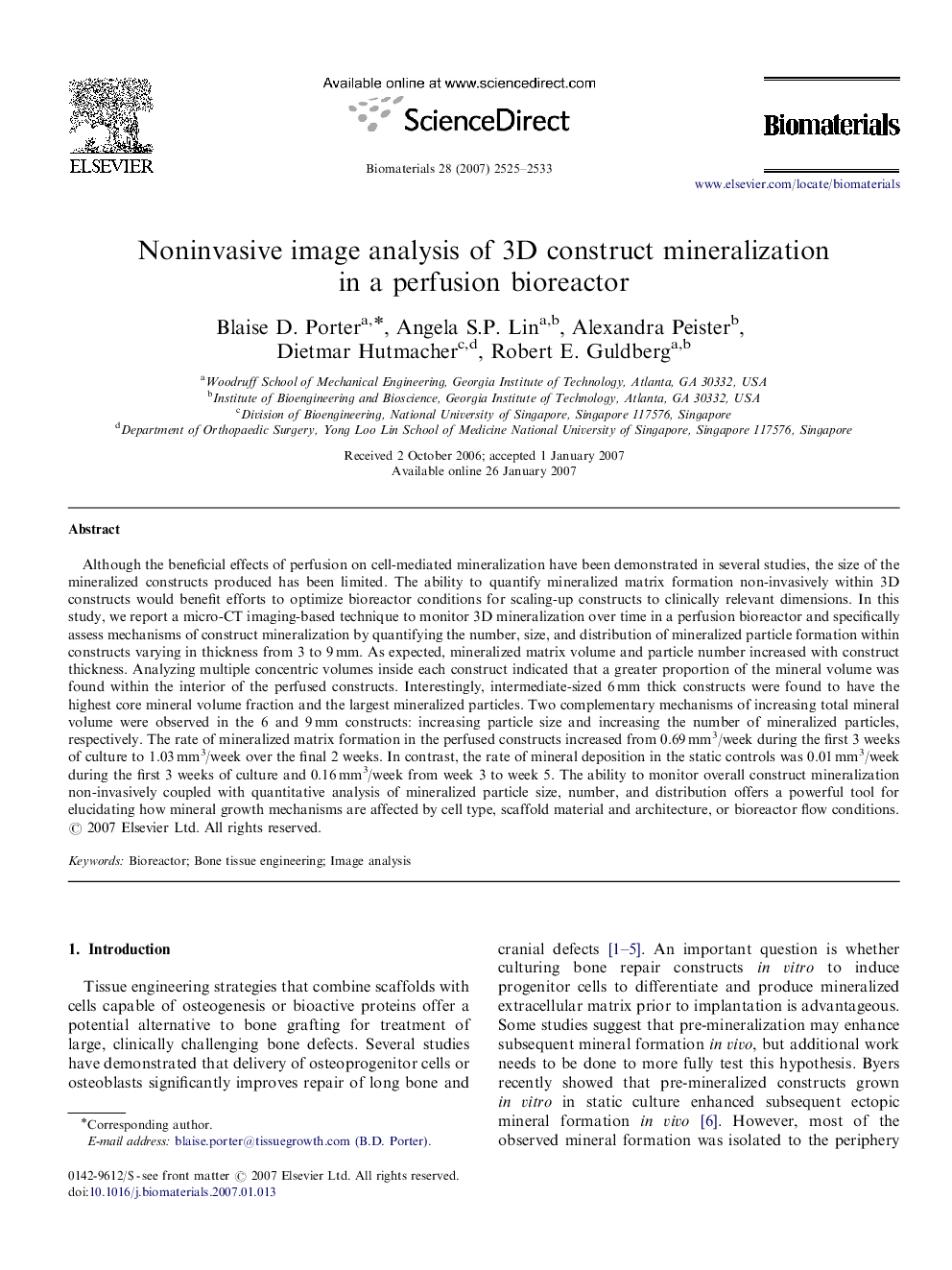| Article ID | Journal | Published Year | Pages | File Type |
|---|---|---|---|---|
| 10146 | Biomaterials | 2007 | 9 Pages |
Although the beneficial effects of perfusion on cell-mediated mineralization have been demonstrated in several studies, the size of the mineralized constructs produced has been limited. The ability to quantify mineralized matrix formation non-invasively within 3D constructs would benefit efforts to optimize bioreactor conditions for scaling-up constructs to clinically relevant dimensions. In this study, we report a micro-CT imaging-based technique to monitor 3D mineralization over time in a perfusion bioreactor and specifically assess mechanisms of construct mineralization by quantifying the number, size, and distribution of mineralized particle formation within constructs varying in thickness from 3 to 9 mm. As expected, mineralized matrix volume and particle number increased with construct thickness. Analyzing multiple concentric volumes inside each construct indicated that a greater proportion of the mineral volume was found within the interior of the perfused constructs. Interestingly, intermediate-sized 6 mm thick constructs were found to have the highest core mineral volume fraction and the largest mineralized particles. Two complementary mechanisms of increasing total mineral volume were observed in the 6 and 9 mm constructs: increasing particle size and increasing the number of mineralized particles, respectively. The rate of mineralized matrix formation in the perfused constructs increased from 0.69 mm3/week during the first 3 weeks of culture to 1.03 mm3/week over the final 2 weeks. In contrast, the rate of mineral deposition in the static controls was 0.01 mm3/week during the first 3 weeks of culture and 0.16 mm3/week from week 3 to week 5. The ability to monitor overall construct mineralization non-invasively coupled with quantitative analysis of mineralized particle size, number, and distribution offers a powerful tool for elucidating how mineral growth mechanisms are affected by cell type, scaffold material and architecture, or bioreactor flow conditions.
